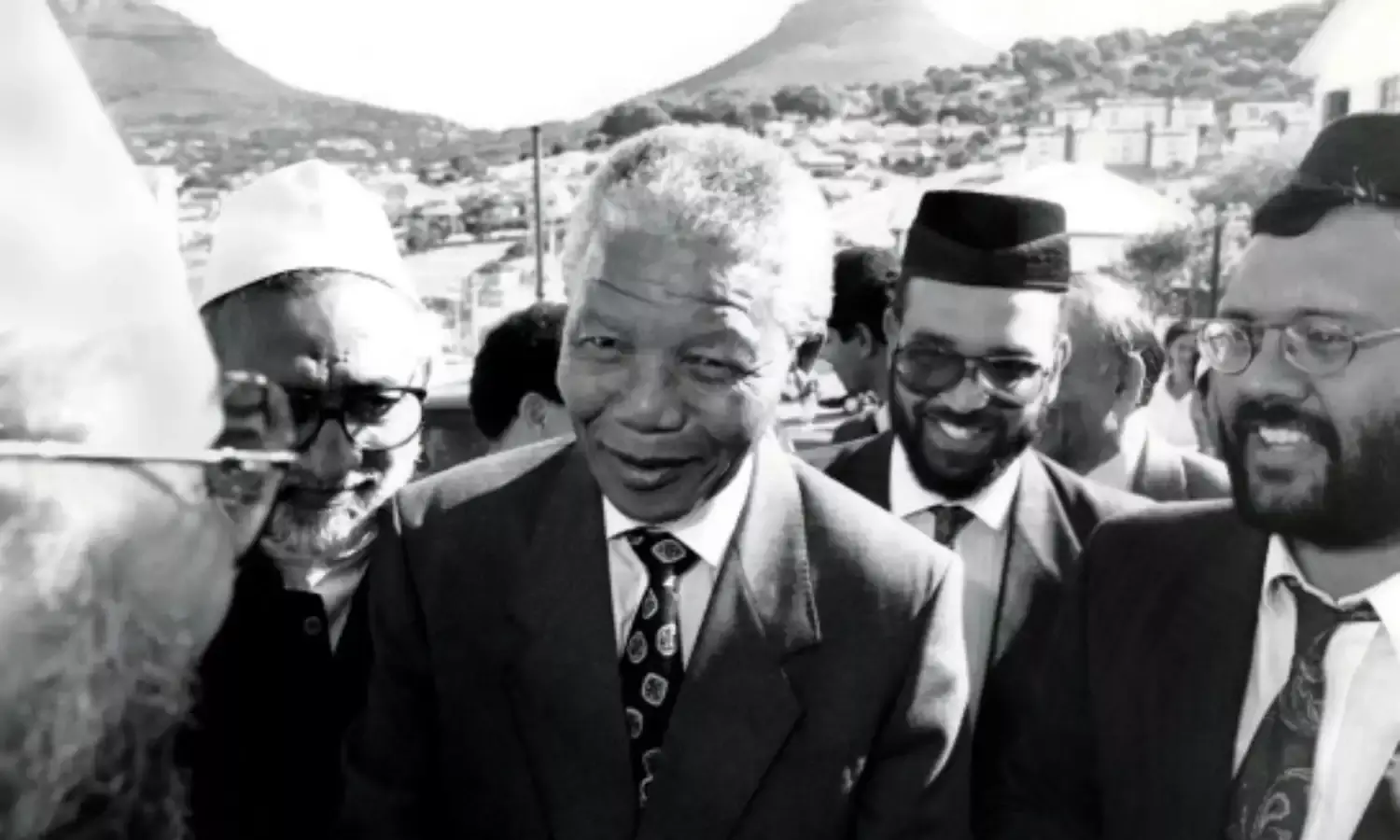How Muslims In Mandela’s Cabinet Outgrew Their Religious Identity
Educated, motivated children of Gujarati Muslim merchants joined the common purpose

When a school invited me for a talk on Nelson Mandela Day last week, accompanied by my TV interview with Madiba, as he was affectionately called, I was transported back to one of the most exciting assignments I had done – the end of Apartheid in South Africa in February 1990.
The fall of the Berlin Wall in 1989 signalled the end of the Soviet Union. This, in its wake unfroze conflicts across the globe which had been sustained by the West as assets in the Cold War.
I remember how Prime Minister Rajiv Gandhi and other Commonwealth leaders at a 1986 summit in London failed to persuade Mrs. Thatcher to stiffen sanctions against the Apartheid regime. “More sanctions would hurt black workers”, she argued.
Likewise, Christian Democrats were kept in power with the unspeakable corruption which Italian judges subsequently investigated and exposed but only after the Soviet threat had ended. Under leaders like Enrico Berlinguer, the Communist party was a formidable threat.
The congealed sectarian conflict in Northern Ireland was sought to be ended, resulting in the Good Friday agreement of 1998. Former Yugoslavia became seven independent republics. As many central Asian republics emerged.
The unforgettable drive through these republics left two indelible images on the mind.
Impeccably clad saleswomen and men supervised large, well-stocked stores of United Colors of Benetton, lined with fashionable clothes and multiple, expensive decorative items. Remarkably, there was not a single buyer in sight. This was a case of capitalism advertising itself.
The other image was of empty mosques but packed Orthodox Churches celebrating the post-Soviet “freedoms”.
In Northern Ireland, the sectarian animus ran deep, going back to the Battle of the Boyne in 1690 when the Protestant William of Orange defeated the Roman Catholic James II. “Had William lost to James, the throne of England would have been Roman Catholic” Jack Sawyer, the distinguished editor of the ‘Belfast Telegraph’, explained to me.
This passionate desire for union with Britain in perpetuity stoked Catholic or Republican anger. Ultra-Right wing Unionists like Rev. Ian Paisley, shunned any accommodation with the Irish Republican Army (IRA), its political wing, the Sinn Fein, or with Dublin. The language was particularly aggressive: “We shall never be under the Jack Boot of Dublin.” Then the Soviet Union collapsed and the Good Friday agreement was forged in 1998.
It is in this sequence that the West decided to free itself of the odium of sustaining Apartheid. It was as part of the choreography of this process that Nelson Mandela’s release after 27 years in the White man’s prison became its crowning glory.
Archbishop Desmond Tutu, Mandela’s friend, and a distinguished leader of the anti-Apartheid struggle encapsulated the consequences of Apartheid in the course of one of his sermons. “When the White man first came to the South he had the Bible in his hands, we blacks had all the lands. But as time passed our roles were reversed: we had the Bible and the White man had all the lands.”
To cover Mandela’s release from the Victor Verster prison, outside Cape Town, my crew and I would have to enter South Africa before Apartheid had formally ended. How does one enter a country with which India has no diplomatic relations? Informal arrangements were made with the help of the Joint Secretary, Africa, Arundhati Ghosh, a most helpful officer and friend.
Clearing immigration formalities was easy enough, but almost insurmountable was the customs regime. A closed society had exceptionally strict rules for TV cameras and other equipment. I had to find someone in Johannesburg who would stand surety for us. In other words, someone had to deposit half a million rands with the customs authorities. The sum would be returned on our way out “if the regime had found our behaviour satisfactory.”
In other words, the guarantee was not so much for the equipment as for our journalistic behaviour. It was an unstated promise extracted from us that our TV shows would not embarrass the departing regime.
Among the phone numbers I had carried with me was one of Yusuf Cachalia whose father, Mohammad Cachalia, figures in Mahatma Gandhi’s South Africa years. As soon as Cachalia learnt of our predicament he sent help to what is now Johannesburg’s Oliver Tambo airport, a cheque by way of surety included. It was an extraordinary act of generosity because Yusuf bhai (as I began to call him) did not know me at all.
“I wanted an Indian journalist to cover the end of this cruel system.” Yusuf bhai and his wife Amina, were friends of Mandela’s since his earliest days in the African National Congress (ANC). They were also ANC members before Yusuf bhai branched out into “stocks and shares” in the “interest of family and party comrades.”
It took me a while to understand the presence of nine Cabinet ministers of Indian origin in Mandela’s first Cabinet. One or two Indian diplomats took a dim view of the fact that only Mac Maharaj and Jay Naidu were Hindus. The remainder were all of Muslim origin. Quite remarkably, Frene Ginwala, a Parsee, was the first speaker of the National Assembly.
Mandela’s Principal Adviser in his office was Ahmad Kathrada. Mandela’s successor, Thabo Mbeki maintained the pattern: his Principal Adviser was Essop (Yusuf) Pahad.
There is a sociological explanation. When ships carrying the first batches of indentured labour docked in Natal in 1860 onwards, to work on the sugar plantations, a majority of their progeny joined the Tricameral legislatures established in 1984-94 to accommodate Indians and coloureds. There was no representation for Blacks.



